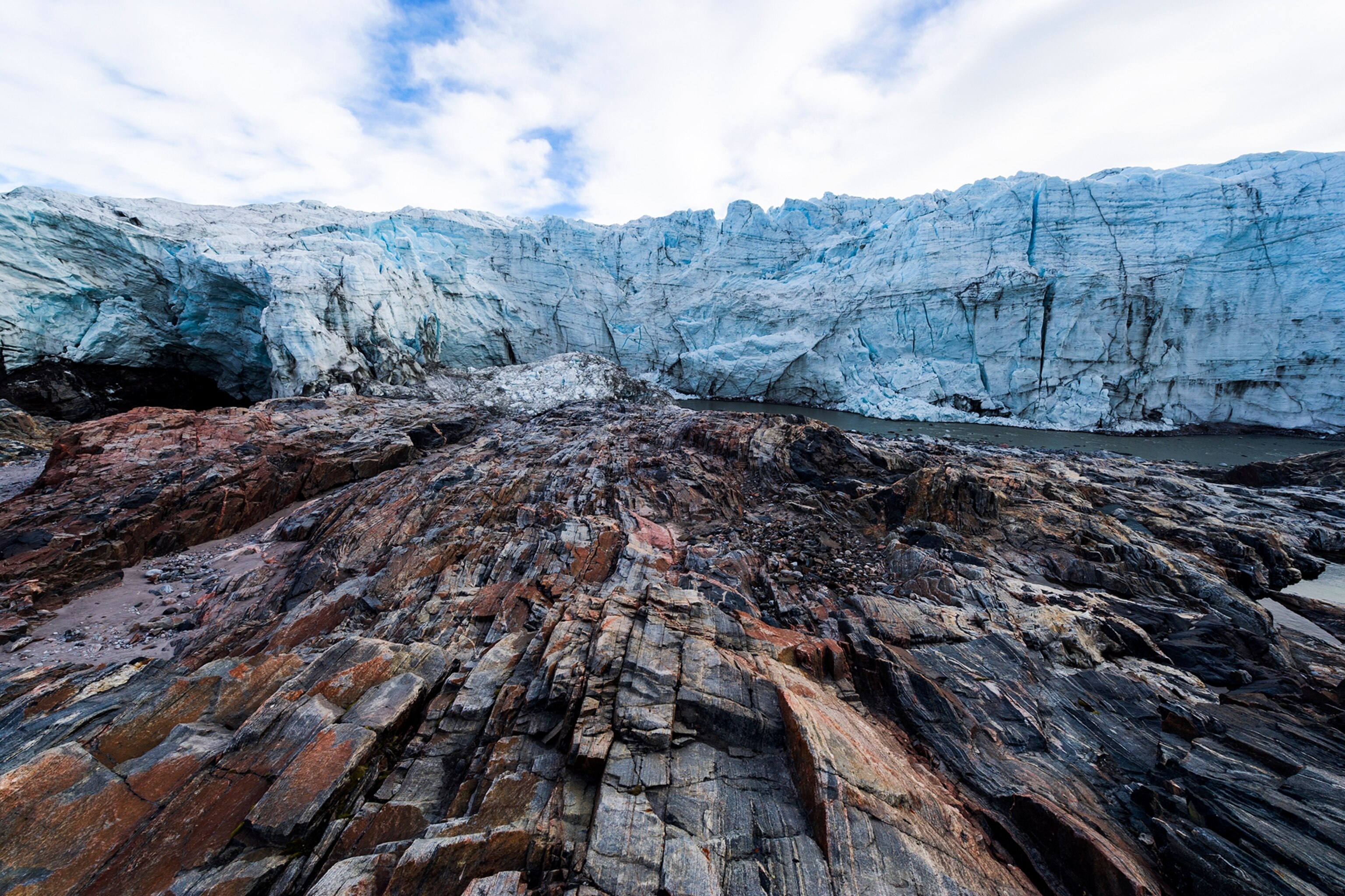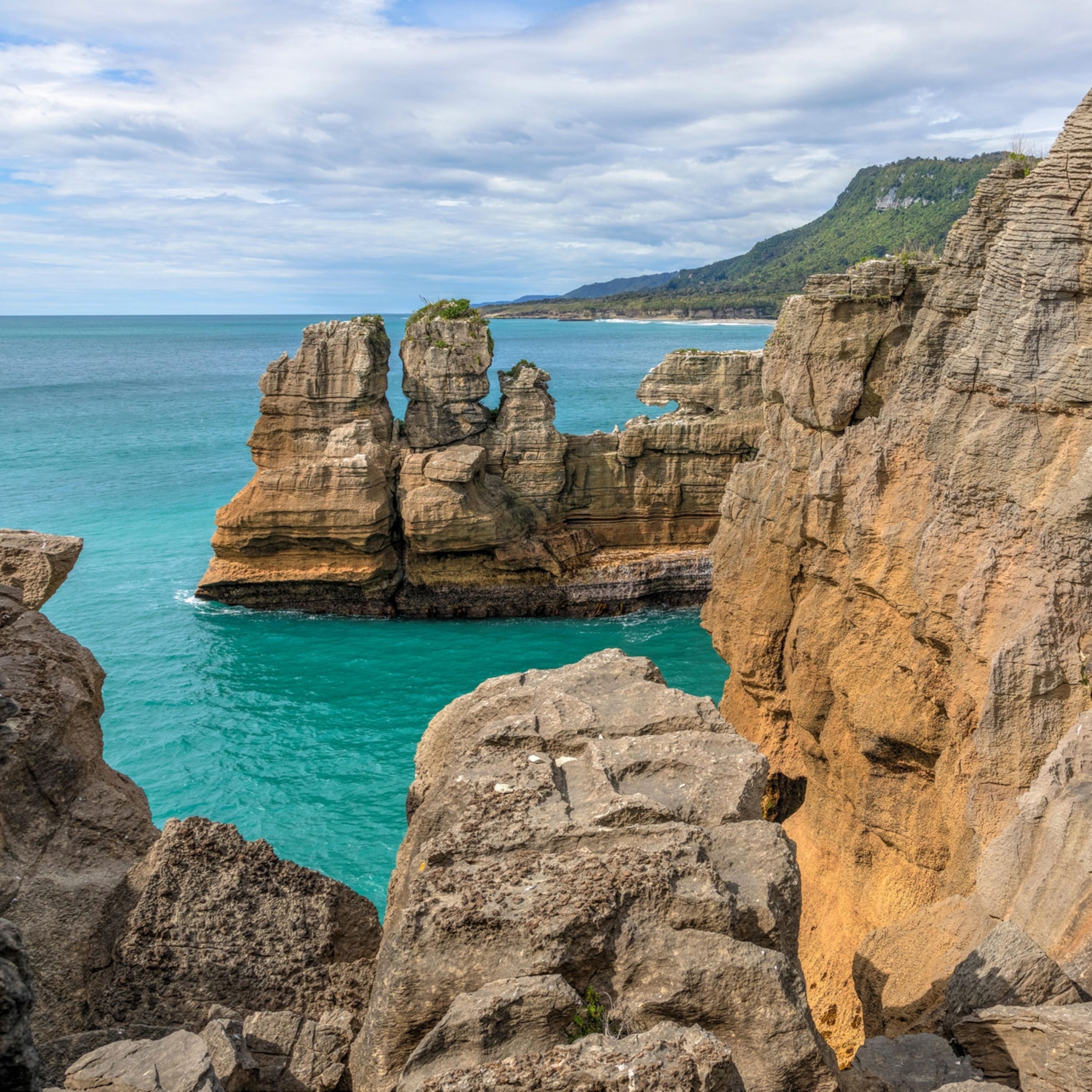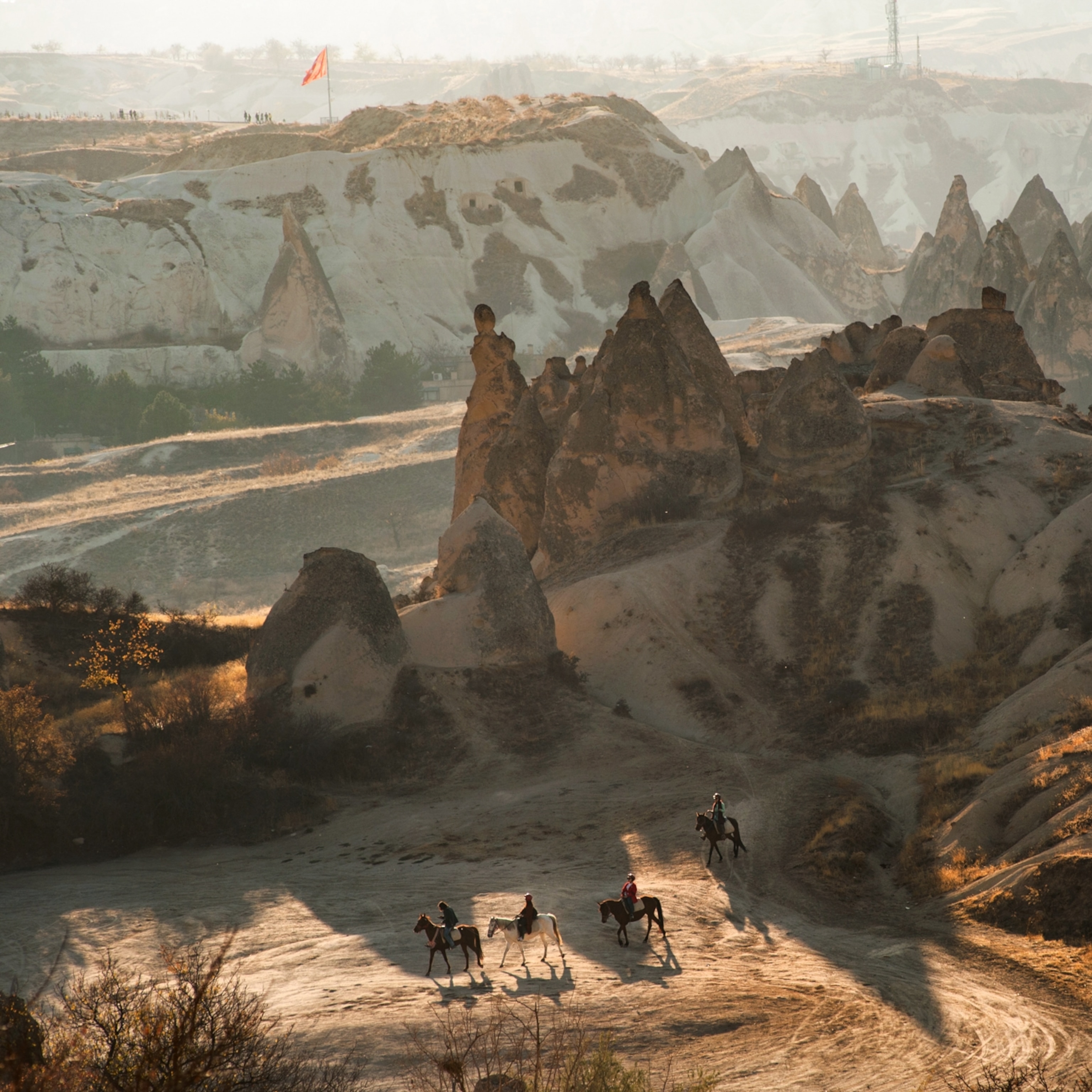Earth's fractured outer shell is in perpetual motion. While usually imperceptible to us surface dwellers, these pieces of a rocky jigsaw puzzle are constantly crashing together, diving beneath one another, and pulling apart to create mountains, volcanoes, and ocean ridges that support a diverse array of life. But Earth has not always hosted this geologic dance, known as plate tectonics, and questions about when it began and how it changed through time both remain hotly debated.
Now, a provocative study published this week in Nature attempts to decipher the mystery, suggesting that our modern era of plate tectonics was kickstarted by so-called Snowball Earth, when ice blanketed our planet around 700 million years ago. Churning glacial activity during this time scoured away more than a mile of our planet's surface—likely causing a massive global gap in the rock record known as the Great Unconformity. The new study posits that this outpouring of material was just the lubrication needed to kick plate tectonics into high gear.
What's more, the researchers think this didn't happen just once. Based on previously published geological and geochemical data, study authors Michael Brown of the University of Maryland and Stephan Sobolev at the GFZ German Research Centre for Geosciences in Potsdam suggest that sediments similarly lubricated earlier stages of tectonic activity after another period of global glaciation between 2.45 and 2.2 billion years ago.
Understanding how and why these processes began could help us better understand our planet today—and perhaps what might happen to its geologic engine in the future. Such an analysis is no easy feat, however, thanks to plate tectonics' efficient recycling our planet's surface, which destroys the trail of evidence about what happened to the crust millions to billions of years ago.

“There’s no question there’s a problem [with preservation],” Brown says. “But we’re stuck with what we’re stuck with, right?” And some scientists laud the team's attempt to make the best of such a spotty geologic record and capture ancient processes with a wide-angle lens.
“Probably for the first time [this study] present[s] such an integrated view,” says Taras Gerya of the ETH Zürich. “This is one of the biggest strengths of this paper.”
But other scientists are less optimistic about the work, including Vicki Hansen of the University of Minnesota Duluth, who takes issue with the paper's decisive language on a topic that's far from settled.
“I think that it’s a lot of smoke and mirrors,” she says. “Do not tell me this is a time when we have major subduction when we don’t even know when plate tectonics started—it’s highly, highly, highly debated.”
Seeds of an idea
In 2016, Sobolev paired up with Brown at a workshop on the origin and evolution of plate tectonics.
“We realized that if we worked together, we could get something out of this,” Brown says. “He's a geophysicist, I'm a geologist, so we both have different skillsets and information.”
When they sat down to chat, they soon spotted a potential through line for past and present Earth: sediments.
In 2003, a Nature study suggested that sediments meddle with the Nazca plate as it plunges beneath the South American plate, influencing the rise of the Andes. Those researchers found that in the Central Andes, where the mountains are taller, there was little sediment in the trench where the plates met. But as they moved south, sediments increased and the mountains shrink.
Based on that finding, it seems that without sediments, higher friction caused the colliding plates to squash together into mighty mountains. But in the sediment-rich southern zones, lowered friction resulted in less deformed land and smaller mountains. Later work led by Sobolev used numerical models to confirm the importance of friction in the Andes' growth.


With this idea in hand, the duo started experimenting with a numerical model of modern global subduction. They found that the friction-reducing properties of sediments are necessary to achieve the current speeds of tectonic plates. Too much sediment and the plates move too fast, but not enough and the plates creep too slow.
Next, they began compiling data from published studies. Dipping into much of their own past work, they assembled a series of geologic markers for subduction and tectonic activity, as well as a compilation of geochemical markers that could point to the emergence and erosion of continental crust.
Chasing glaciers
Based on this compiled data, the researchers are convinced that two periods of glaciation—one between 2.45 and 2.2 billion years ago and another between 750 and 630 million years ago during Snowball Earth—precede times that have the geologic hallmarks of tectonic activity seemingly driven by lots of continental sediments. These periods frame the so-called Boring Billion, a time from 1.8 to 0.8 billion years ago when both the evolution of life, and tectonic activity, seemed to nearly stall out.
So can we say that Snowball Earth actually drove the rise of modern plate tectonics?
“It’s a chicken and egg thing,” says Robert Stern of the University of Texas at Dallas, who was not part of the study team. Stern, in collaboration with Nathan R. Miller of the University of Texas at Austin, previously argued the opposite position to this latest study's conclusions: Perhaps the rise of plate tectonics could have caused Snowball Earth. As tectonics began to whip into action, he notes, volcanoes burbled at the surface and could have pumped planet-cooling sulfur dioxide into the stratosphere, plunging Earth into a deep freeze. While he's intrigued at the new study's conclusions, he remains unconvinced.
And then there's the question of sediments as lubricants. Some past research supports that this is a likely role for sediments in subduction. Gerya goes as far as to call the idea “not surprising,” adding that he hadn't yet considered the process on a global scale until now.
But sediments are not the only possible lubricant for tectonic plates, notes João Duarte, a marine geologist from the Instituto Dom Luiz at the University of Lisbon. In an analysis of subduction zones around the world, Duarte and his colleagues found that a thicker layer of sediments didn't mean speedier subduction as might be expected if this grit was the primary lubricant. Instead, numerical models and lab-based experiments suggested that the main lubricant is water, released from not only the sediments but the minerals of the plunging slab.
“Sediments are very light and would resist subducting in big quantities,” Duarte explains via email.
Still, Duarte thinks this kind of research is important because it forces scientists to think about problems from a different angle, adding that Earth was quite different in the past. And Brown notes that the debate surrounding the study's conclusions is all part of the scientific process.
“For the particular data we chose to use, the hypothesis didn’t fail,” Brown says. “Now we have to see whether somebody else comes along and demonstrates that something's wrong with it.”
An evasive date
One sticking point for many researchers remains: When did plate tectonics actually start?
“Everybody likes to pick a number,” Brown says, adding that he hopes this study can help hasten a change in that line of thinking. Plate tectonics, which by definition is a planet-wide affair, didn't necessarily start all at once, he explains. Instead, it's more likely that individual subduction zones evolved slowly, eventually leading to the global jostling.
“It can’t be an on-off switch,” Stern agrees. But that seems to be the limit of their scant common ground, as Stern sits firmly in the camp arguing for a geologically recent onset of plate tectonics around a billion years ago.
And looking for the earliest stages of continent formation won't necessarily help, adds Hansen. Her past research on Venus, our hellishly hot planetary twin, suggests that its early continent-like structures were the result of big impacts by extraterrestrial objects. Similar processes, she says, could have been at work on early Earth.
How will we ever solve this conundrum? “When the rest of the world agrees that I’m right,” Stern quips.
With time, continued research and debates—including the conversations this study is sure to raise—will help narrow down some likely scenarios. Plate tectonics itself didn't even gain widespread acceptance until the late 1960s—more than half a century after German geophysicist Alfred Wegener presented an in-depth proposal of our drifting continents.
“This is something that is happening under our feet, and it took 50 years to recognize it,” Stern says. “How long will it take us to figure out what’s not happening anymore?”
Related Topics
You May Also Like
Go Further
Animals
- Soy, skim … spider. Are any of these technically milk?Soy, skim … spider. Are any of these technically milk?
- This pristine piece of the Amazon shows nature’s resilienceThis pristine piece of the Amazon shows nature’s resilience
- Octopuses have a lot of secrets. Can you guess 8 of them?
- Animals
- Feature
Octopuses have a lot of secrets. Can you guess 8 of them? - This biologist and her rescue dog help protect bears in the AndesThis biologist and her rescue dog help protect bears in the Andes
Environment
- This pristine piece of the Amazon shows nature’s resilienceThis pristine piece of the Amazon shows nature’s resilience
- Listen to 30 years of climate change transformed into haunting musicListen to 30 years of climate change transformed into haunting music
- This ancient society tried to stop El Niño—with child sacrificeThis ancient society tried to stop El Niño—with child sacrifice
- U.S. plans to clean its drinking water. What does that mean?U.S. plans to clean its drinking water. What does that mean?
History & Culture
- Beauty is pain—at least it was in 17th-century SpainBeauty is pain—at least it was in 17th-century Spain
- The real spies who inspired ‘The Ministry of Ungentlemanly Warfare’The real spies who inspired ‘The Ministry of Ungentlemanly Warfare’
- Heard of Zoroastrianism? The religion still has fervent followersHeard of Zoroastrianism? The religion still has fervent followers
- Strange clues in a Maya temple reveal a fiery political dramaStrange clues in a Maya temple reveal a fiery political drama
- How technology is revealing secrets in these ancient scrollsHow technology is revealing secrets in these ancient scrolls
Science
- Soy, skim … spider. Are any of these technically milk?Soy, skim … spider. Are any of these technically milk?
- Can aspirin help protect against colorectal cancers?Can aspirin help protect against colorectal cancers?
- The unexpected health benefits of Ozempic and MounjaroThe unexpected health benefits of Ozempic and Mounjaro
- Do you have an inner monologue? Here’s what it reveals about you.Do you have an inner monologue? Here’s what it reveals about you.
- Jupiter’s volcanic moon Io has been erupting for billions of yearsJupiter’s volcanic moon Io has been erupting for billions of years
Travel
- This chef is taking Indian cuisine in a bold new directionThis chef is taking Indian cuisine in a bold new direction
- On the path of Latin America's greatest wildlife migrationOn the path of Latin America's greatest wildlife migration
- Everything you need to know about Everglades National ParkEverything you need to know about Everglades National Park
- Spend a night at the museum at these 7 spots around the worldSpend a night at the museum at these 7 spots around the world








